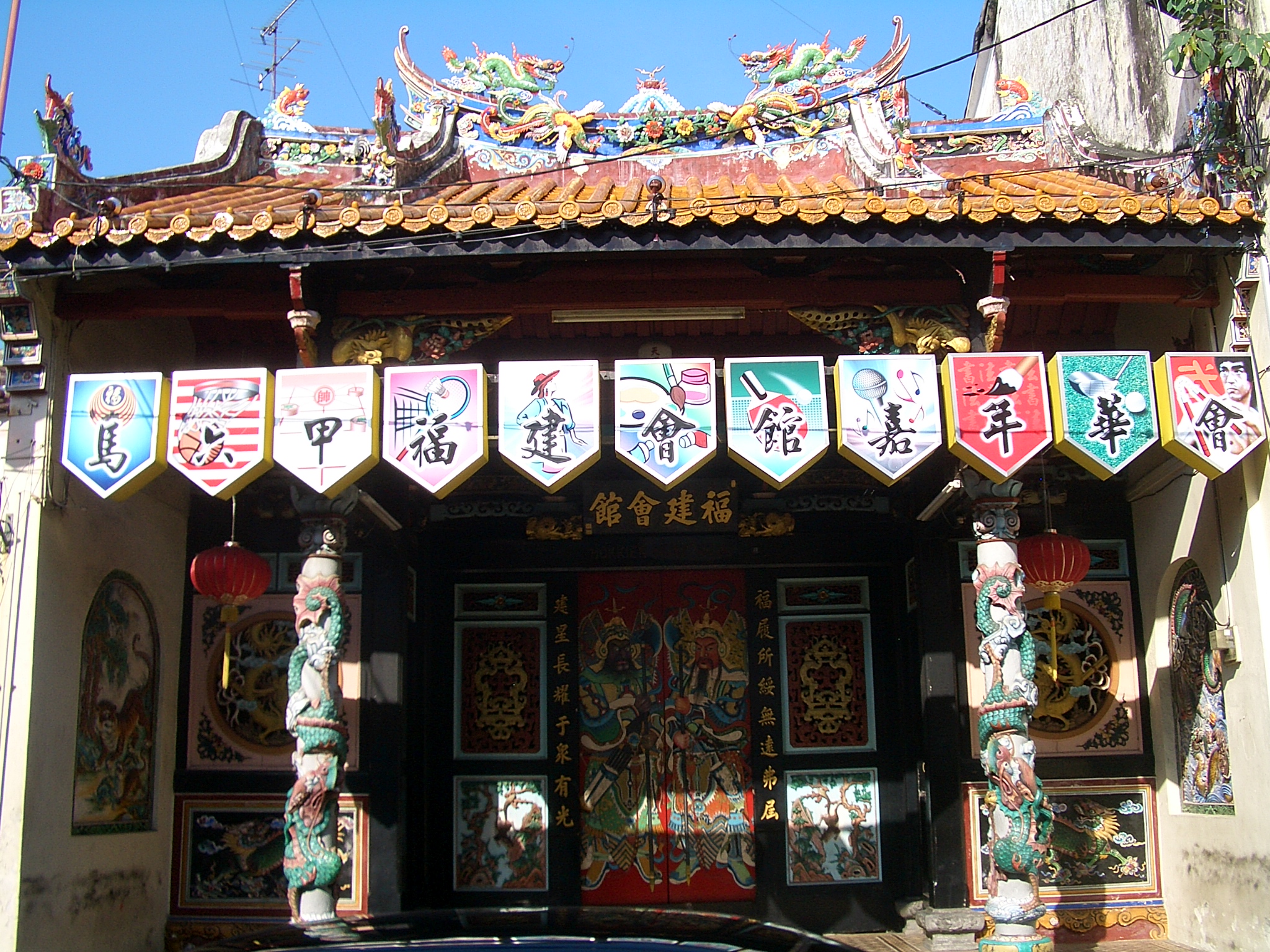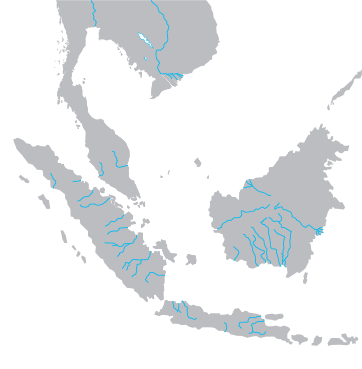|
Hokkiens
The Hoklo people () are a Han Chinese subgroup who speak Hokkien, a Southern Min language, or trace their ancestry to southeastern Fujian in China, and known by various related terms such as Banlam people (), Minnan people, Fujianese people or more commonly in Southeast Asia as the Hokkien people (). The Hokkien people are found in significant numbers in China, Taiwan, Hong Kong, Macau, Singapore, Malaysia, Philippines, Indonesia, Brunei, Myanmar, and the United States. The Hokkien people have a distinct culture and architecture, including Hokkien shrines and temples with tilted sharp eaves, high and slanted top roofs, and finely detailed decorative inlays of wood and porcelain. The Hokkien language, which includes Taiwanese Hokkien, is the mainstream Southern Min, which is partially mutually intelligible to other Southern Min varieties such as Teochew, Zhongshan, Haklau, and Zhenan. Etymology In Southern Fujian, the Hokkien speakers refer to themselves as Banlam people ... [...More Info...] [...Related Items...] OR: [Wikipedia] [Google] [Baidu] |
Chinese Singaporean
Chinese Singaporeans, Singaporean Chinese or Sino-Singaporeans () are Singaporeans of Han Chinese ancestry. Chinese Singaporeans constitute 75.9% of the Singaporean resident population according to the official census, making them the largest ethnic group in Singapore, being the majority, whereas Malays and Indians are minorities. As early as the 10th century, there was evidence of Chinese people trading and settling in Singapore, with various Chinese records documenting trading activities and Chinese residents on the island up until the 14th century. Prior to the establishment of Singapore as a British trading port, there was a small population of 120 Malays who were followers of Temenggong Abdul Rahman, and about 20–30 Chinese living on the island. After Singapore became a British colony, there was an influx of male Chinese migrant workers, who would then usually return to their families in China after they had earned enough. There was a significant number of Chinese ... [...More Info...] [...Related Items...] OR: [Wikipedia] [Google] [Baidu] |
Burmese Chinese
Chinese Burmese, also Sino-Burmese or Tayoke (), are Burmese citizens of Han Chinese ethnicity. They are a group of overseas Chinese born or raised in Myanmar (Burma). Burmese Chinese are a well established ethnic group and are well represented in all upper levels of Burmese society. They play a leading role in Burma's business sector and dominate the Burmese economy. They also have a strong presence in Burma's political scene with several having been major political figures, including San Yu, Khin Nyunt, and Ne Win. Etymology In the Burmese language, the Chinese are called ''Tayoke'' (, ''tarut'', ) and formerly spelt (''tarup''). The earliest evidence of this term dates to the Bagan Era, in the 13th century, during which it referred to the territory and a variety of peoples to the north and northeast of Myanmar. Various scholars have proposed that it comes from the Chinese term for "Turk" (突厥, ''Tūjué'' / ''tú jué''); from the name of Dali City, Yunnan, Dali (大� ... [...More Info...] [...Related Items...] OR: [Wikipedia] [Google] [Baidu] |
Malay Language
Malay ( , ; , Jawi alphabet, Jawi: ) is an Austronesian languages, Austronesian language spoken primarily by Malays (ethnic group), Malays in several islands of Maritime Southeast Asia and the Malay Peninsula on the mainland Asia. The language is an official language of Brunei, Malaysia, and Singapore. Indonesian language, Indonesian, a standardized variety of Malay, is the official language of Indonesia and one of the working languages of East Timor. Malay is also spoken as a regional language of Malays (ethnic group), ethnic Malays in Indonesia and the Thai Malays, southern part of Thailand. Altogether, it is spoken by 60 million people across Maritime Southeast Asia. The language is pluricentric and a ISO 639 macrolanguage, macrolanguage, i.e., a group of Mutual intelligibility, mutually intelligible speech varieties, or dialect continuum, that have no traditional name in common, and which may be considered distinct languages by their speakers. Several varieties of it ar ... [...More Info...] [...Related Items...] OR: [Wikipedia] [Google] [Baidu] |
China
China, officially the People's Republic of China (PRC), is a country in East Asia. With population of China, a population exceeding 1.4 billion, it is the list of countries by population (United Nations), second-most populous country after India, representing 17.4% of the world population. China spans the equivalent of five time zones and Borders of China, borders fourteen countries by land across an area of nearly , making it the list of countries and dependencies by area, third-largest country by land area. The country is divided into 33 Province-level divisions of China, province-level divisions: 22 provinces of China, provinces, 5 autonomous regions of China, autonomous regions, 4 direct-administered municipalities of China, municipalities, and 2 semi-autonomous special administrative regions. Beijing is the country's capital, while Shanghai is List of cities in China by population, its most populous city by urban area and largest financial center. Considered one of six ... [...More Info...] [...Related Items...] OR: [Wikipedia] [Google] [Baidu] |
Minnan Region
Minnan, Banlam or Minnan Golden Triangle (), refers to the coastal region in South Fujian Province, China, which includes the prefecture-level cities of Xiamen, Quanzhou and Zhangzhou. The region accounts for 40 percent of the GDP of Fujian Province. It is the native homeland of the Hokkien people who speak the Hokkien language or Minnan language, a variety of Southern Min.http://www.fjfao.gov.cn/english/foreignersinfujian/fujianintheeyesofforeigners/201112/t20111222_625021.htm Other terms used on the Minnan region include the one sinologist Sinology, also referred to as China studies, is a subfield of area studies or East Asian studies involved in social sciences and humanities research on China. It is an academic discipline that focuses on the study of the Chinese civilizatio ... G. William Skinner used, which was the term Zhang-Quan () to describe the region in his guide to the physiographic macroregions of China. References Fujian Regions of China ... [...More Info...] [...Related Items...] OR: [Wikipedia] [Google] [Baidu] |
Southern Min
Southern Min (), Minnan ( Mandarin pronunciation: ) or Banlam (), is a group of linguistically similar and historically related Chinese languages that form a branch of Min Chinese spoken in Fujian (especially the Minnan region), most of Taiwan (many citizens are descendants of settlers from Fujian), Eastern Guangdong, Hainan, and Southern Zhejiang. Southern Min dialects are also spoken by descendants of emigrants from these areas in diaspora, most notably in Southeast Asia, such as Singapore, Malaysia, the Philippines, Indonesia, Brunei, Southern Thailand, Myanmar, Cambodia, Southern and Central Vietnam, as well as major cities in the United States, including in San Francisco, in Los Angeles and in New York City. Minnan is the most widely-spoken branch of Min, with approximately 34 million native speakers as of 2025. The most widely spoken Southern Min language is Hokkien, which includes Taiwanese. Other varieties of Southern Min have significant differences from Hok ... [...More Info...] [...Related Items...] OR: [Wikipedia] [Google] [Baidu] |
Han Chinese Subgroup
The Han Chinese people can be defined into ethnicity, subgroups based on linguistic, cultural, ethnic, genetic, and regional features. The terminology used in Mandarin Chinese, Mandarin to describe the groups is: "minxi" (, pronounced ), used in Mainland China or "zuqun" (, pronounced ), used in Taiwan. No Han subgroup is recognized as one of China, People's Republic of China's 56 list of ethnic groups in China, official ethnic groups. In Taiwan, only three subgroups, Hakka people, Hakka, Hoklo Taiwanese, Hoklo, and Waishengren are recognized. Han subgroups Mandarin-speaking groups * Total Native Han Speakers: 885,000,000 Mandarin Chinese, Mandarin, also known as the Northern dialects, is the largest of the Chinese languages. Even in regions where non-Mandarin speakers historically dominated, Mandarin is being brought in as a lingua franca. The Mandarin-speaking groups are the largest group in mainland China, but in the Overseas Chinese, diaspora the Min, Hakka and Cantonese ... [...More Info...] [...Related Items...] OR: [Wikipedia] [Google] [Baidu] |
Islam
Islam is an Abrahamic religions, Abrahamic monotheistic religion based on the Quran, and the teachings of Muhammad. Adherents of Islam are called Muslims, who are estimated to number Islam by country, 2 billion worldwide and are the world's Major religious groups, second-largest religious population after Christians. Muslims believe that Islam is the complete and universal version of a Fitra, primordial faith that was revealed many times through earlier Prophets and messengers in Islam, prophets and messengers, including Adam in Islam, Adam, Noah in Islam, Noah, Abraham in Islam, Abraham, Moses in Islam, Moses, and Jesus in Islam, Jesus. Muslims consider the Quran to be the verbatim word of God in Islam, God and the unaltered, final revelation. Alongside the Quran, Muslims also believe in previous Islamic holy books, revelations, such as the Torah in Islam, Tawrat (the Torah), the Zabur (Psalms), and the Gospel in Islam, Injil (Gospel). They believe that Muhammad in Islam ... [...More Info...] [...Related Items...] OR: [Wikipedia] [Google] [Baidu] |
Christianity
Christianity is an Abrahamic monotheistic religion, which states that Jesus in Christianity, Jesus is the Son of God (Christianity), Son of God and Resurrection of Jesus, rose from the dead after his Crucifixion of Jesus, crucifixion, whose coming as the Messiah#Christianity, messiah (Christ (title), Christ) was Old Testament messianic prophecies quoted in the New Testament, prophesied in the Old Testament and chronicled in the New Testament. It is the Major religious groups, world's largest and most widespread religion with over 2.3 billion followers, comprising around 28.8% of the world population. Its adherents, known as Christians, are estimated to make up a majority of the population in Christianity by country, 157 countries and territories. Christianity remains Christian culture, culturally diverse in its Western Christianity, Western and Eastern Christianity, Eastern branches, and doctrinally diverse concerning Justification (theology), justification and the natur ... [...More Info...] [...Related Items...] OR: [Wikipedia] [Google] [Baidu] |
Mahayana Buddhism
Mahāyāna ( ; , , ; ) is a term for a broad group of Buddhist traditions, texts, philosophies, and practices developed in ancient India ( onwards). It is considered one of the three main existing branches of Buddhism, the others being Theravāda and Vajrayāna.Harvey (2013), p. 189. Mahāyāna accepts the main scriptures and teachings of early Buddhism but also recognizes various doctrines and texts that are not accepted by Theravada Buddhism as original. These include the Mahāyāna sūtras and their emphasis on the ''bodhisattva'' path and ''Prajñāpāramitā''. Vajrayāna or Mantra traditions are a subset of Mahāyāna which makes use of numerous tantric methods Vajrayānists consider to help achieve Buddhahood. Mahāyāna also refers to the path of the bodhisattva striving to become a fully awakened Buddha for the benefit of all sentient beings, and is thus also called the "Bodhisattva Vehicle" (''Bodhisattvayāna''). Damien Keown (2003), A Dictionary of Buddhism', ... [...More Info...] [...Related Items...] OR: [Wikipedia] [Google] [Baidu] |
Ancestor Veneration In China
Chinese ancestor veneration, also called Chinese ancestor worship, is an aspect of the Chinese traditional religion which revolves around the ritual celebration of the deified ancestors and tutelary deities of people with the same surname organised into lineage societies in ancestral shrines. Ancestors, their ghosts, or spirits, and gods are considered part of "this world". They are neither supernatural (in the sense of being outside nature) nor transcendent in the sense of being beyond nature. The ancestors are humans who have become godly beings, beings who keep their individual identities. For this reason, Chinese religion is founded on veneration of ancestors. Ancestors are believed to be a means of connection to the supreme power of Tian as they are considered embodiments or reproducers of the creative order of Heaven. It is a major aspect of Han Chinese religion, but the custom has also spread to ethnic minority groups. Ancestor veneration is largely focused on male an ... [...More Info...] [...Related Items...] OR: [Wikipedia] [Google] [Baidu] |







